|
Books Should Be Free Loyal Books Free Public Domain Audiobooks & eBook Downloads |
|
|
Books Should Be Free Loyal Books Free Public Domain Audiobooks & eBook Downloads |
|
Religion |
|---|
|
Book type:
Sort by:
View by:
|
By: George W. Foote (1850-1915) | |
|---|---|
 Bible Romances First Series
Bible Romances First Series
| |
 Prisoner for Blasphemy
Prisoner for Blasphemy
| |
 Arrows of Freethought
Arrows of Freethought
| |
By: Georgeanna M. Gardenier | |
|---|---|
 Two Decades A History of the First Twenty Years' Work of the Woman's Christian Temperance Union of the State of New York
Two Decades A History of the First Twenty Years' Work of the Woman's Christian Temperance Union of the State of New York
| |
By: Gertrude P. Dyer | |
|---|---|
 Parables from Flowers
Parables from Flowers
| |
 Little Pollie Or a Bunch of Violets
Little Pollie Or a Bunch of Violets
| |
By: Gilbert Murray (1866-1957) | |
|---|---|
 Five Stages of Greek Religion
Five Stages of Greek Religion
| |
By: Glance Gaylord (1847-1868) | |
|---|---|
 Culm Rock The Story of a Year: What it Brought and What it Taught
Culm Rock The Story of a Year: What it Brought and What it Taught
| |
By: Goldsworthy Lowes Dickinson (1862-1932) | |
|---|---|
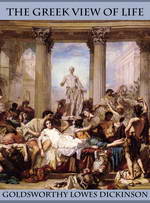 The Greek View of Life
The Greek View of Life
“With the Greek civilisation beauty perished from the world. Never again has it been possible for man to believe that harmony is in fact the truth of all existence.”This elegantly-written work provides a splendid introduction to the Greeks of the classic period: how they thought, wrote, and organised their lives and loves. Although it dates from the 1890s, there is very little about it that has dated. To its author’s credit, the subject of “Greek love” is dealt with in a sane and factual context - despite the judicial assassination of Oscar Wilde going on in the background... | |
By: Goldwin Smith (1823-1910) | |
|---|---|
 No Refuge but in Truth
No Refuge but in Truth
| |
 The Religious Situation
The Religious Situation
| |
By: Gottfried Wilhelm Leibniz (1646-1716) | |
|---|---|
 Theodicy Essays on the Goodness of God, the Freedom of Man and the Origin of Evil
Theodicy Essays on the Goodness of God, the Freedom of Man and the Origin of Evil
| |
By: Grace Beaumont | |
|---|---|
 Aunt Judith The Story of a Loving Life
Aunt Judith The Story of a Loving Life
| |
By: Grace Livingston Hill (1865-1947) | |
|---|---|
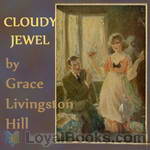 Cloudy Jewel
Cloudy Jewel
Julia Cloud, the oldest--and most responsible--child of her family, helped raise her four siblings due to their mother's long-time illness and father's death. After faithfully nursing two ill brothers (who died), she then cared for her invalid mother for many years. When Julia's mother passes on, her only surviving sibling Ellen fully expects--and nearly demands--that her spinster sister come live with her family. But to earn her keep, Julia must be their live-in housekeeper and babysitter for Ellen's four children. But Julia's college-age niece and nephew arrive unexpectedly from California and offer Aunt Cloudy Jewel a surprise opportunity she never expected in her wildest dreams. | |
By: Grafton Elliot Smith (1871-1937) | |
|---|---|
 The Evolution of the Dragon
The Evolution of the Dragon
| |
By: Gustave Flaubert (1821-1880) | |
|---|---|
 The Temptation of St. Antony or A Revelation of the Soul
The Temptation of St. Antony or A Revelation of the Soul
| |
By: H. C. G. (Handley Carr Glyn) Moule (1841-1920) | |
|---|---|
 Messages from the Epistle to the Hebrews
Messages from the Epistle to the Hebrews
| |
 Philippian Studies Lessons in Faith and Love from St. Paul's Epistle to the Philippians
Philippian Studies Lessons in Faith and Love from St. Paul's Epistle to the Philippians
| |
By: H. G. Wells (1866-1946) | |
|---|---|
 God, the Invisible King
God, the Invisible King
Wells wrote in his book God the Invisible King that his idea of God did not draw upon the traditional religions of the world: "This book sets out as forcibly and exactly as possible the religious belief of the writer. [Which] is a profound belief in a personal and intimate God." Later in the work he aligns himself with a "renascent or modern religion ... neither atheist nor Buddhist nor Mohammedan nor Christian ... [that] he has found growing up in himself." | |
 Soul of a Bishop
Soul of a Bishop
| |
By: H. J. (Harry John) Wilmot-Buxton (1843-1911) | |
|---|---|
 The Life of Duty, v. 2 A year's plain sermons on the Gospels or Epistles
The Life of Duty, v. 2 A year's plain sermons on the Gospels or Epistles
| |
By: H. Rider Haggard | |
|---|---|
 The Wizard
The Wizard
Described by the author, best known for his King Solomon's Mines, as "a tale of victorious faith," this story begins on a Sunday afternoon in an English church. Most of the book, though, is set in Africa, and the adventure story is as engaging as any of Haggard's African tales. What makes this one different is the religious question: What has happened to miracles in the church? Is there any power left in Jesus' promise, "Whoso that believeth in me, the works that I do he shall do also, and whatsoever ye shall ask in my name, that will I do"? | |
 The Brethren
The Brethren
Set in the days of the Crusaders, this books tells of a young maiden named Rosamund, and her twin cousins. Godwin is the grey eyed thoughtful man, and Wulf is the blue eyed warrior. They are both knights of England and they are both in love with their fair cousin. But the riddle of the story is which does Rosamund love?The adventure begins when Rosamund is taken from England and carried to the East. The plot thickens as the two young knights follow her in hopes of rescuing her from the Muslim leader, Saladin... | |
By: H. S. Olcott (1832-1907) | |
|---|---|
 Buddhist Catechism
Buddhist Catechism
The simple aim of this little book is to give so succinct and yet comprehensive a digest of Buddhistic history, ethics and philosophy as to enable beginners to understand and appreciate the noble ideal taught by the Buddha, and thus make it easier for them to follow out the Dharma in its details. In this book, information is presented in a catechism format: question and answer. The matter has been grouped within five categories, viz.: (1) The Life of the Buddha; (2) the Doctrine; (3) the Sangha, or monastic order; (4) a brief history of Buddhism, its Councils and propaganda; (5) some reconciliation of Buddhism with science... | |
By: H. Stanley (Herbert Stanley) Redgrove (1887-1943) | |
|---|---|
 Bygone Beliefs: being a series of excursions in the byways of thought
Bygone Beliefs: being a series of excursions in the byways of thought
| |
By: H. Trusta (1815-1852) | |
|---|---|
 The Angel over the Right Shoulder The Beginning of a New Year
The Angel over the Right Shoulder The Beginning of a New Year
| |
By: Handley Carr Glyn Moule (1841-1920) | |
|---|---|
 Epistle of St Paul to the Romans
Epistle of St Paul to the Romans
He who attempts to expound the Epistle to the Romans, when his sacred task is over, is little disposed to speak about his Commentary; he is occupied rather with an ever deeper reverence and wonder over the Text which he has been permitted to handle, a Text so full of a marvellous man, above all so full of God. It remains only to express the hope that these pages may serve in some degree to convey to their readers a new Tolle, Lege for the divine Text itself; if only by suggesting to them sometimes the words of St Augustine, "To Paul I appeal from all interpreters of his writings." | |
By: Hannah Trager (1870-1943) | |
|---|---|
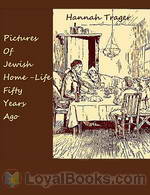 Pictures of Jewish Home-Life Fifty Years Ago
Pictures of Jewish Home-Life Fifty Years Ago
Hannah Trager published Pictures of Jewish Home-Life Fifty Years Ago in 1926, so the book is a portrait of day to day life for a Jewish family in Jerusalem around 1876. In each chapter, Mr. Jacobs reads a letter from his cousins living in Jerusalem many years earlier, each one teaching his family and friends about a different holiday or tradition of their people. (Introduction by wildemoose) | |
By: Hannibal Gamon | |
|---|---|
 The Praise of a Godly Woman
The Praise of a Godly Woman
| |
By: Hans Christian Andersen (1805-1875) | |
|---|---|
 True Story of My Life
True Story of My Life
| |
By: Hargrave Jennings (1817-1890) | |
|---|---|
 Phallic Worship
Phallic Worship
A fairly scholarly, short survey of religious sexual symbols and practices from ancient times to the near-present, and within various countries and religions. The essay is coloured by liberality and acceptance of common themes between different religions. Note: "phallic" in the context of this work refers to both male and female genitalia. | |
By: Harold B. (Harold Bruce) Hunting (1879-1958) | |
|---|---|
 Hebrew Life and Times
Hebrew Life and Times
| |
By: Harold Bell Wright (1872-1944) | |
|---|---|
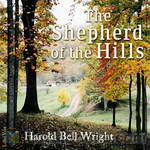 The Shepherd of the Hills
The Shepherd of the Hills
The story depicts the lives of mountain people living in the Ozarks and the mystery surrounding an old man called ‘The Shepherd of the Hills,’ who’s called Dad Howitt. The backdrop storyline surrounds the pretty Samantha Lane, called Sammy, and her love of Young Matt, Grant Matthews. The shepherd, an elderly, mysterious, learned man, escapes the buzzing restlessness of the city to live in the backwoods neighborhood of Mutton Hollow in the Ozark hills. | |
 The Calling of Dan Matthews
The Calling of Dan Matthews
| |
 The Re-Creation of Brian Kent
The Re-Creation of Brian Kent
| |
By: Harry Emerson Fosdick (1878-1969) | |
|---|---|
 Christianity and Progress
Christianity and Progress
| |
By: Harvey Newcomb (1803-1863) | |
|---|---|
 A Practical Directory for Young Christian Females Being a Series of Letters from a Brother to a Younger Sister
A Practical Directory for Young Christian Females Being a Series of Letters from a Brother to a Younger Sister
| |
By: Hastings Rashdall (1858-1924) | |
|---|---|
 Philosophy and Religion Six Lectures Delivered at Cambridge
Philosophy and Religion Six Lectures Delivered at Cambridge
| |
By: Helen Ekin Starrett (1840-1920) | |
|---|---|
 Letters to a Daughter and A Little Sermon to School Girls
Letters to a Daughter and A Little Sermon to School Girls
Helen Ekin Starrett, journalist, mother of two daughters, grandmother of seven granddaughters and teacher to many young girls at the Starrett School for Girls offers lessons in life and religion to girls about to "pass out from the guardianship of home into life with its duties and trials". | |
By: Helen H. (Helen Hamilton) Gardener (1853-1925) | |
|---|---|
 Men, Women, and Gods And Other Lectures
Men, Women, and Gods And Other Lectures
| |
By: Helen Van-Anderson (1859-) | |
|---|---|
 The Right Knock A Story
The Right Knock A Story
| |
By: Helena P. Blavatsky (1831-1891) | |
|---|---|
 From the Caves and Jungles of Hindostan
From the Caves and Jungles of Hindostan
| |
By: Helena Petrovna Blavatsky (1831-1891) | |
|---|---|
 Secret Doctrine.Volume I. Cosmogenesis.Part II. The Evolution Of Symbolism.
Secret Doctrine.Volume I. Cosmogenesis.Part II. The Evolution Of Symbolism.
In this work of comparative religion, ontology and epistemology, Mme. Blavatsky presents science as a belief system of as much value as others in contributing to human knowledge of the seven secret keys to understanding through mathematics and intuition. A comparative study of ancient texts and their commentators over more than three thousand years. | |
By: Hélène A. Guerber (1859-1929) | |
|---|---|
 Myths of the Norsemen From the Eddas and Sagas
Myths of the Norsemen From the Eddas and Sagas
| |
By: Henrietta Vaders | |
|---|---|
 Wikkey A Scrap
Wikkey A Scrap
| |
By: Henry Drummond | |
|---|---|
 The Greatest Thing in the World and Other Addresses
The Greatest Thing in the World and Other Addresses
The spiritual classic The Greatest Thing In the World is a trenchant and tender analysis of Christian love as set forth in the thirteenth chapter of I Corinthians. The other addresses speak to other aspects of Christian life and thought. | |
 Natural Law in the Spiritual World
Natural Law in the Spiritual World
| |
 Beautiful Thoughts
Beautiful Thoughts
| |
By: Henry F. (Henry Frey) Lutz | |
|---|---|
 To Infidelity and Back
To Infidelity and Back
| |
By: Henry Frederick Cope (1870-1923) | |
|---|---|
 Religious Education in the Family
Religious Education in the Family
| |
By: Henry Harland (1861-1905) | |
|---|---|
 The Lady Paramount
The Lady Paramount
| |
By: Henry Melvill Gwatkin (1844-1916) | |
|---|---|
 The Arian Controversy
The Arian Controversy
| |
By: Henry Pepwell (-1540) | |
|---|---|
 The Cell of Self-Knowledge : seven early English mystical treatises printed by Henry Pepwell in 1521
The Cell of Self-Knowledge : seven early English mystical treatises printed by Henry Pepwell in 1521
| |
By: Henry Peter Brougham Brougham and Vaux (1778-1868) | |
|---|---|
 The Fallen Star, or, the History of a False Religion
The Fallen Star, or, the History of a False Religion
| |
By: Henry Rider Haggard (1856-1925) | |
|---|---|
 Pearl Maiden
Pearl Maiden
This is the story of Miriam, an orphan Christian woman living in Rome in the first century. She falls in love with a Roman officer, but knows that her Jewish childhood playmate loves her too and will do anything in order to get her love in return. | |
By: Henry Rogers (1806-1877) | |
|---|---|
 The Eclipse of Faith Or, A Visit To A Religious Sceptic
The Eclipse of Faith Or, A Visit To A Religious Sceptic
| |
By: Henry Sloane Coffin (1877-1954) | |
|---|---|
 Some Christian Convictions A Practical Restatement in Terms of Present-Day Thinking
Some Christian Convictions A Practical Restatement in Terms of Present-Day Thinking
| |
By: Henry Steel Olcott (1832-1907) | |
|---|---|
 The Life of Buddha and Its Lessons
The Life of Buddha and Its Lessons
| |
By: Henry T. (Henry Thorne) Sell | |
|---|---|
 Studies in the Life of the Christian
Studies in the Life of the Christian
| |
By: Henry Thayer Niles (1825-1901) | |
|---|---|
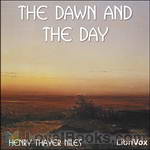 The Dawn and the Day
The Dawn and the Day
The Dawn and the Day, or, The Buddha and the Christ, Part 1 is a text similar to the epic poetry of Homer or, more accurately, classic Hindu texts, such as the Baghavad-Gita. | |